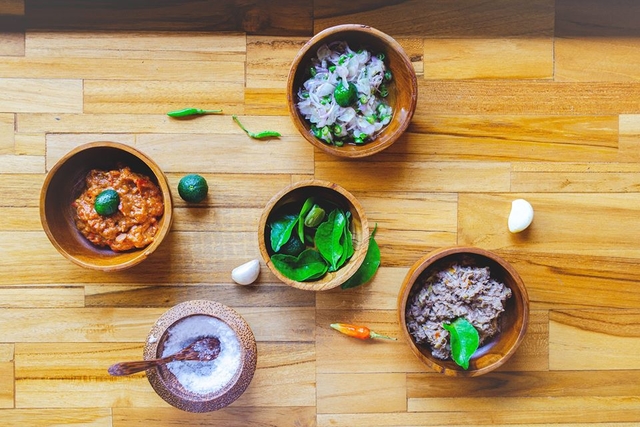
Sambal is a traditional Indonesian chili sauce. In local cuisine, it's added to main dishes, fish, chicken, as well as rice, noodles, soups, and vegetables.
You can buy ready-made sambal in bottles or plastic packaging at stores, but it's not the same.
At home, every Indonesian housewife prepares authentic, fiery sambal: it gives dishes the right spicy taste that is loved in Southeast Asia.
The birthplace of sambal is considered to be the island of Java. It used to be made from the hot spice "kabia," which is now rarely found in Indonesia, mostly in medicinal preparations, and ginger.
When sailors from North and South America brought chili peppers to these lands, the main composition of sambal became chili, garlic, shallots, and "terasi" paste made from fermented shrimp. The other ingredients vary.
For the sauce, a special small lime with bumpy skin is used - it has a more pronounced taste and the aroma of essential oil. In the local language, it's called "lemo."
Sambal is loved in Malaysia, Singapore, Brunei, and Sri Lanka. In Indonesia, there are more than two hundred variations of it.
The sauce is divided into two types: sambal masak (cooked) and sambal matah (raw). In the first case, the ingredients are fried in oil to let the flavors penetrate each other and become more distinct, while in the second, raw ingredients are mixed and served immediately.
Save the recipes!
Tomato Sambal
- 1-2 tomatoes
- 1-2 large red sweet chilies
- 3-4 small red hot chilies
- 4-5 shallots
- 3-4 cloves of garlic
- shrimp paste "terasi"
- coconut oil
- lime juice
- salt
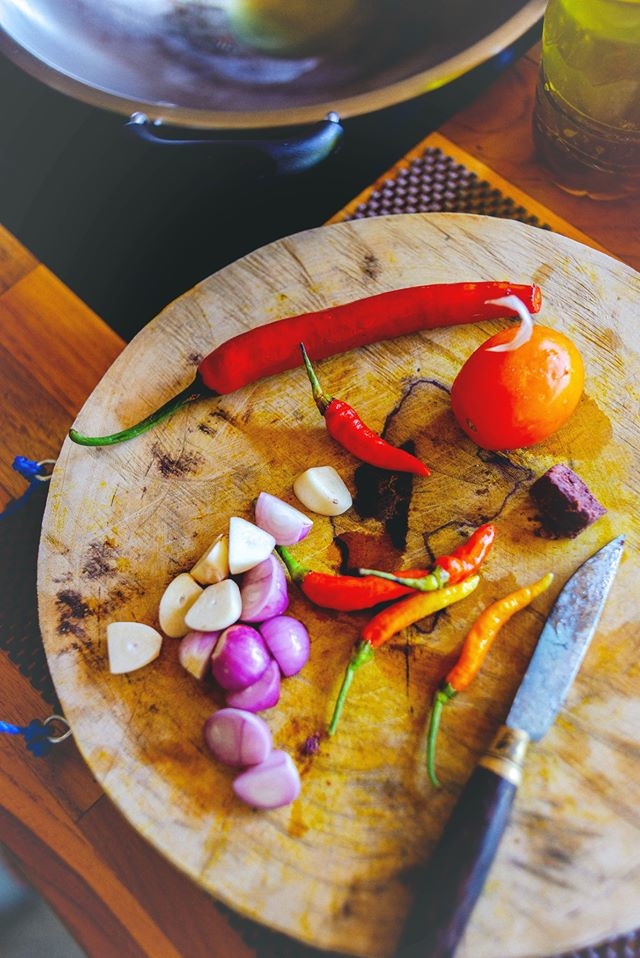
We chop chili, onion, and garlic into small pieces and sauté them in coconut oil. Simultaneously, we cut tomatoes, add them to the other ingredients, and sauté as well.
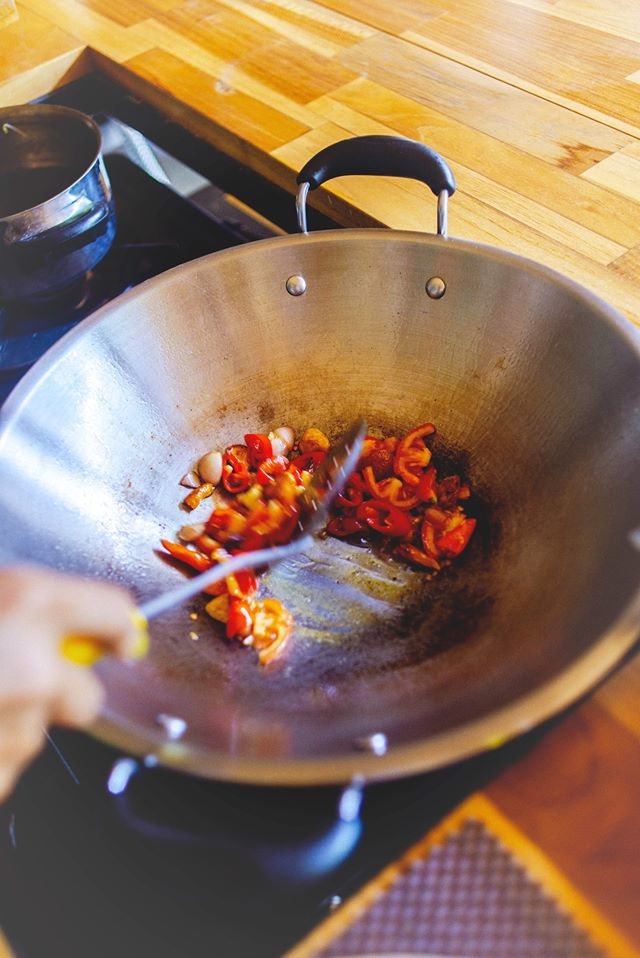
When the vegetables become soft, we transfer them to a stone mortar and crush them with a pestle. Local women insist on not using household appliances and do everything manually.
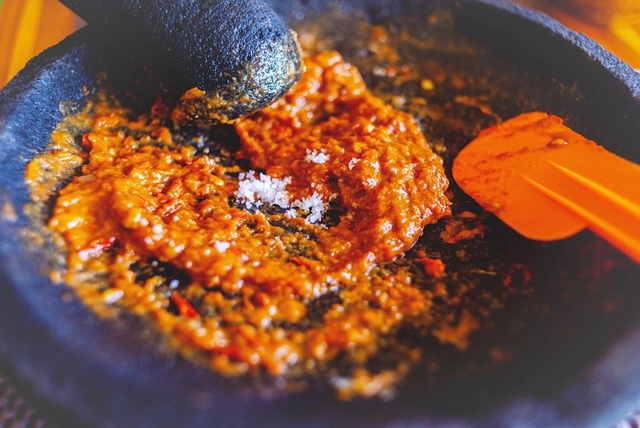
We also sauté shrimp paste in coconut oil, add it to the mashed mixture. Season with salt, squeeze lime juice, mix everything thoroughly – it's ready!
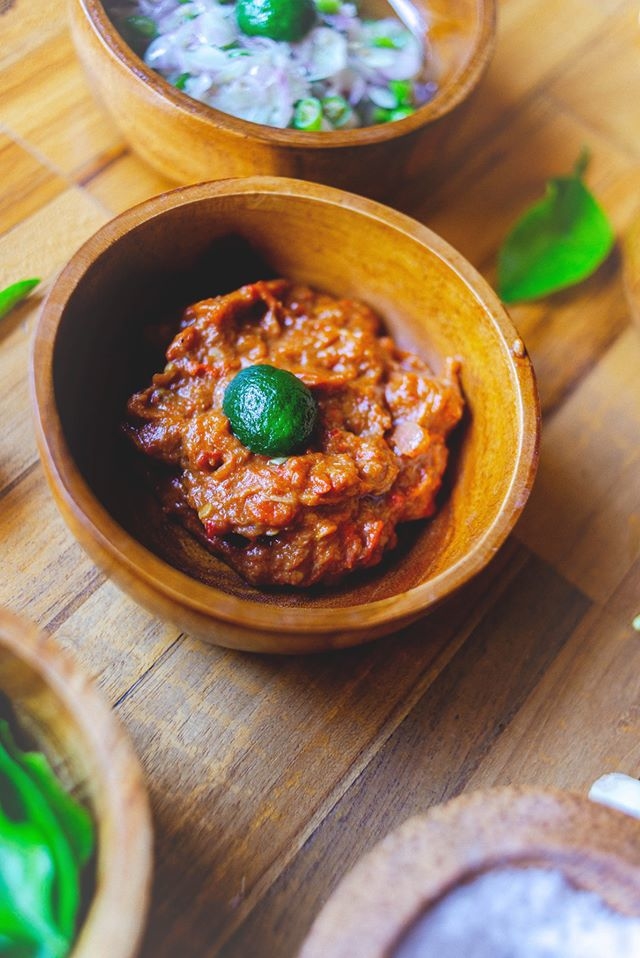
Sambal from Torch Ginger Stems
2-3 torch ginger stems
4-6 small red chilies
2-3 cloves of garlic
shrimp paste "terasi"
coconut oil
salt
The local name for the sauce is 'sambal bongkot.' It is made from the stems of torch ginger, a popular plant in Asia with huge bright pink flowers.
The stems are quite firm, so we first remove the tough outer layer with a knife and slice the softer part into thin circles.
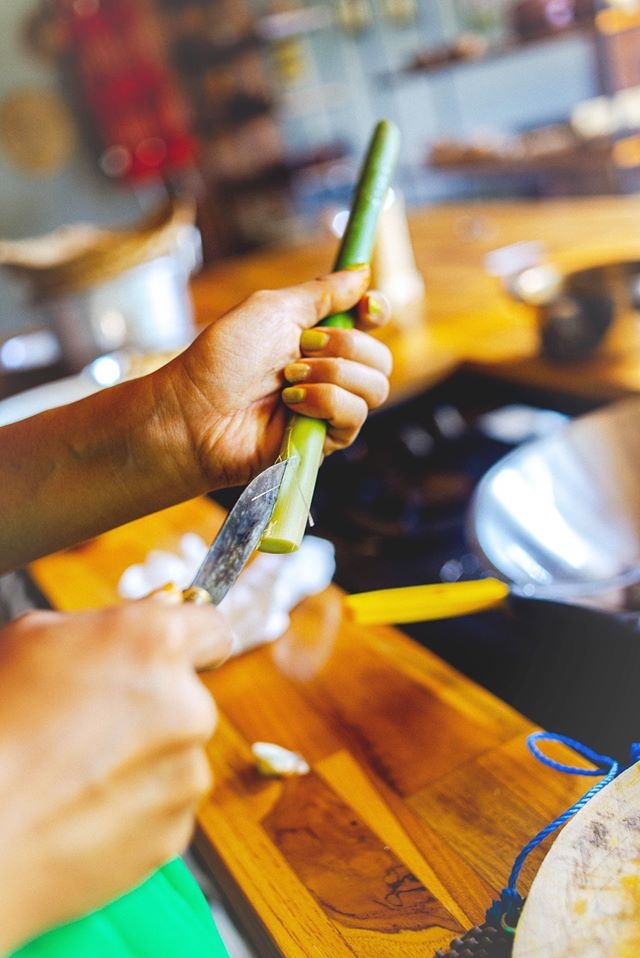
Crush garlic with chilies in a mortar.
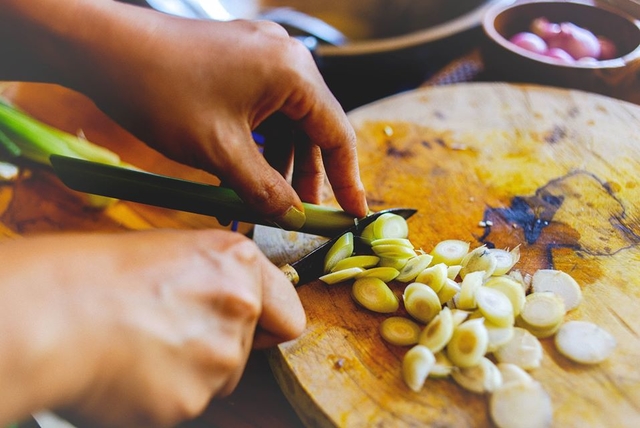
Add the sliced stems and thoroughly crush the ingredients.
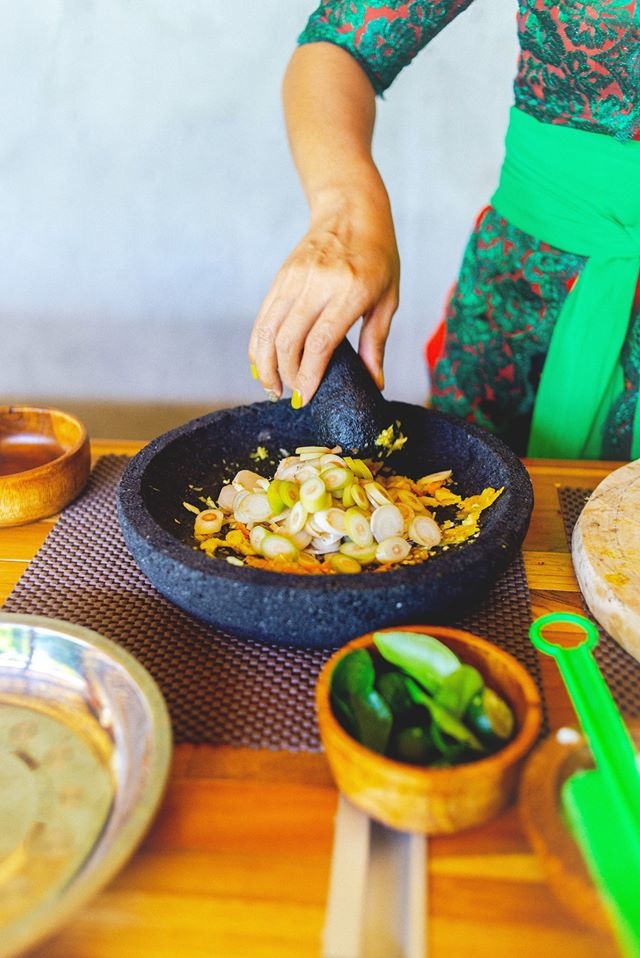
Add shrimp paste 'terasi' and crush everything again in the mortar.
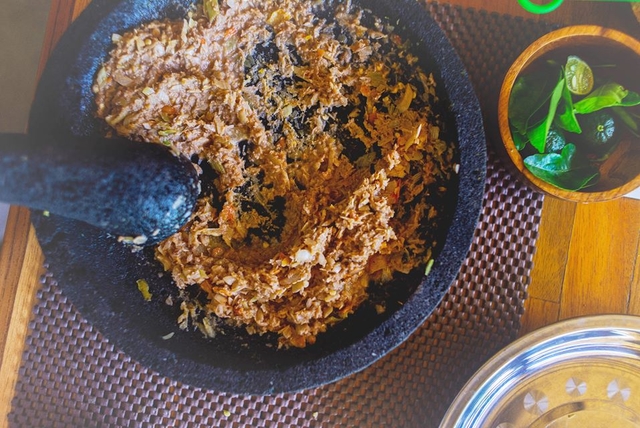
Transfer the homogeneous mixture to a wok and sauté in coconut oil for a few minutes – it's ready!
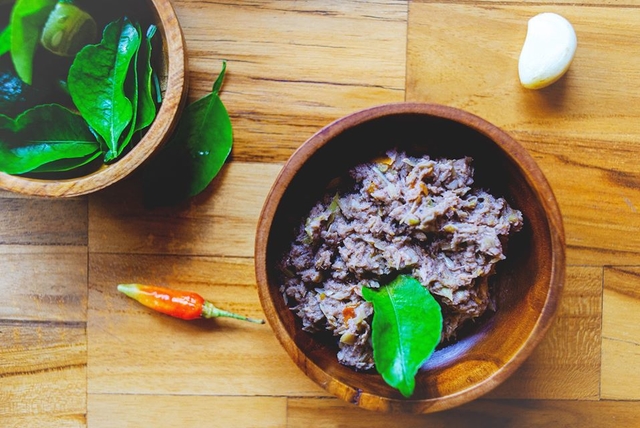
Classic sambal for vegetables
4-6 small red chilies
6-7 shallots
3-4 cloves of garlic
shrimp paste 'terasi'
coconut oil
Best served with rice and fried tofu.
Take soybean sprouts, water spinach, choy sum, and any other green vegetables. Boil in water for 3-4 minutes.
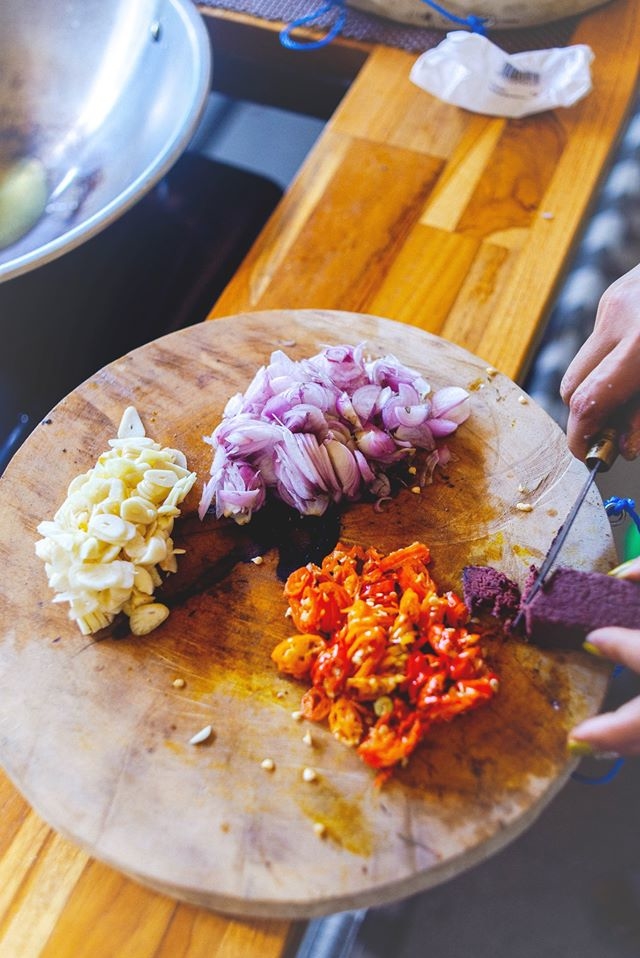
Then finely chop chili, shallots, and garlic, each separately sautéed in oil. Grate the flesh of the coconut, previously scorched over fire, using a special grater.
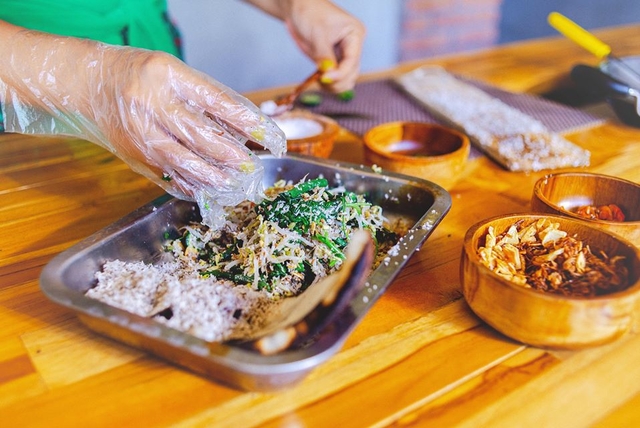
Mix the coconut shreds with the cooked vegetables. Add sautéed chili, shallots, and garlic. Sauté shrimp paste separately and also add it to the vegetables. Fermented shrimp paste 'terasi.'
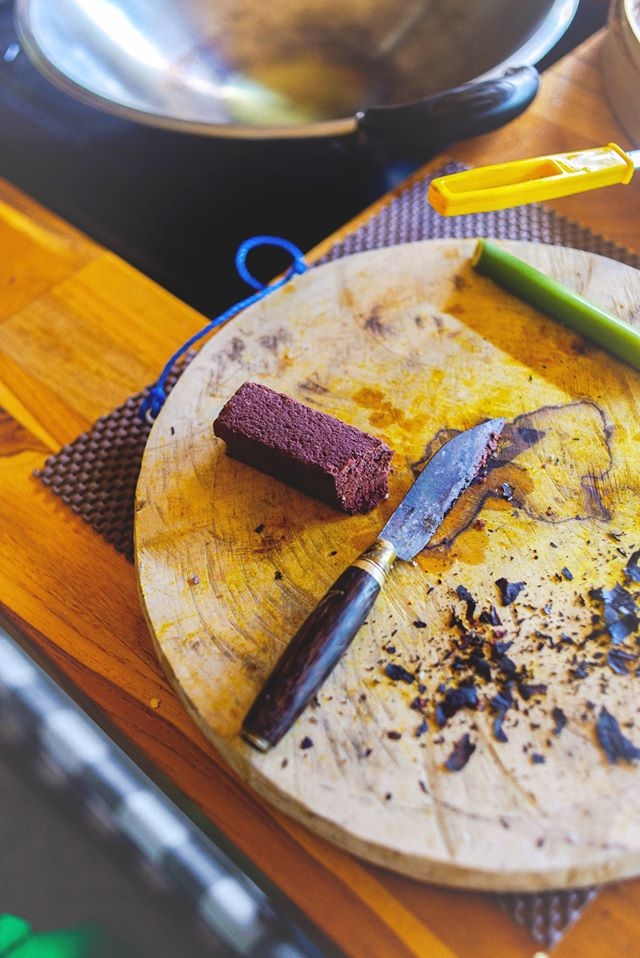
Mix everything thoroughly once again – it's ready!
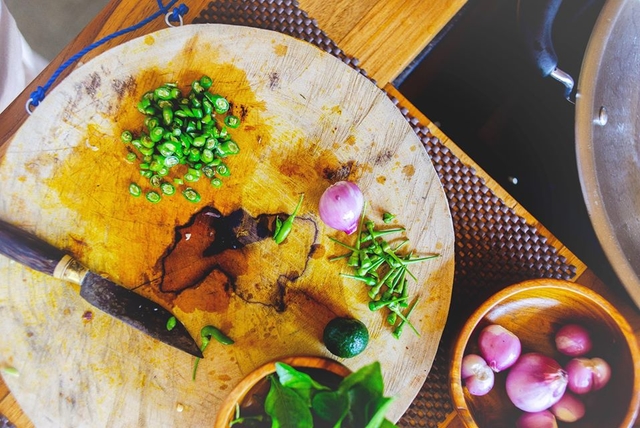
Traditional Balinese Raw Sambal
8-10 small green chilies
6-8 shallots
coconut oil
lime juice
salt
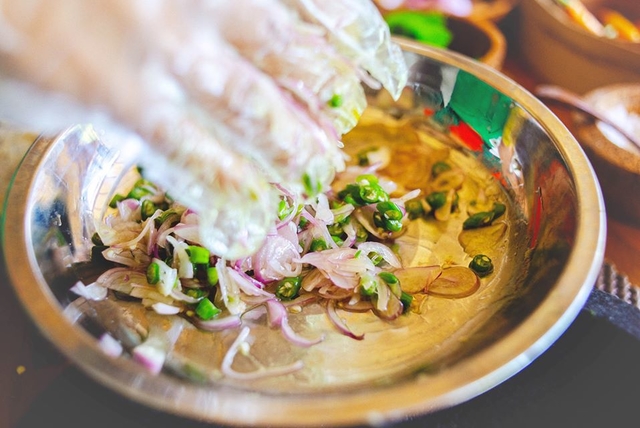
Locals serve 'mata' sambal with fried chicken, also known as 'green sambal.'
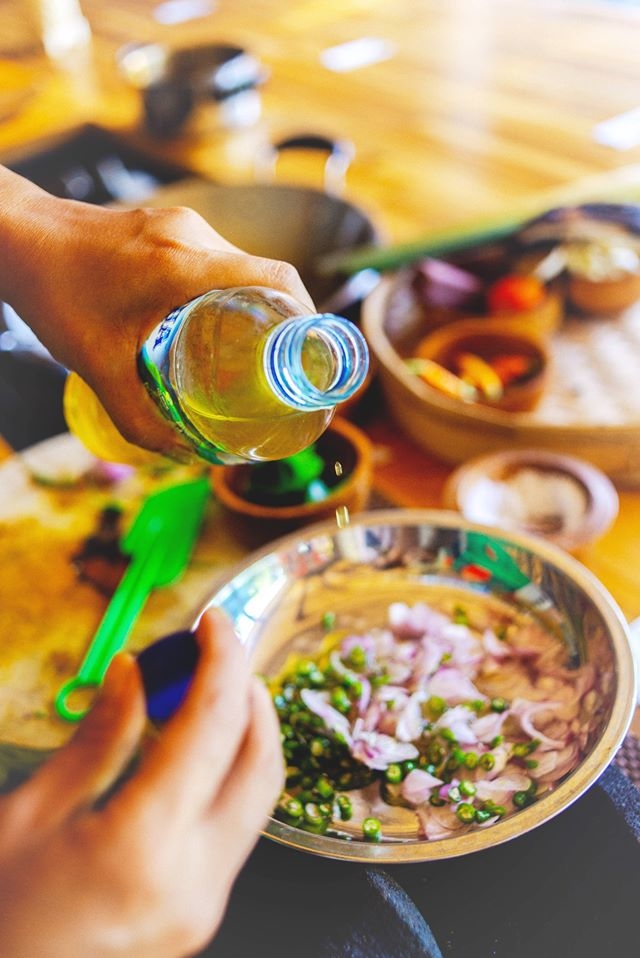
Slice green chili into thin circles, shallots into strips. Mix the ingredients well, season with salt, add lime juice and coconut oil – it's ready!
Homemade coconut oil for traditional Balinese raw sambal. Traditional Balinese Raw Sambal.
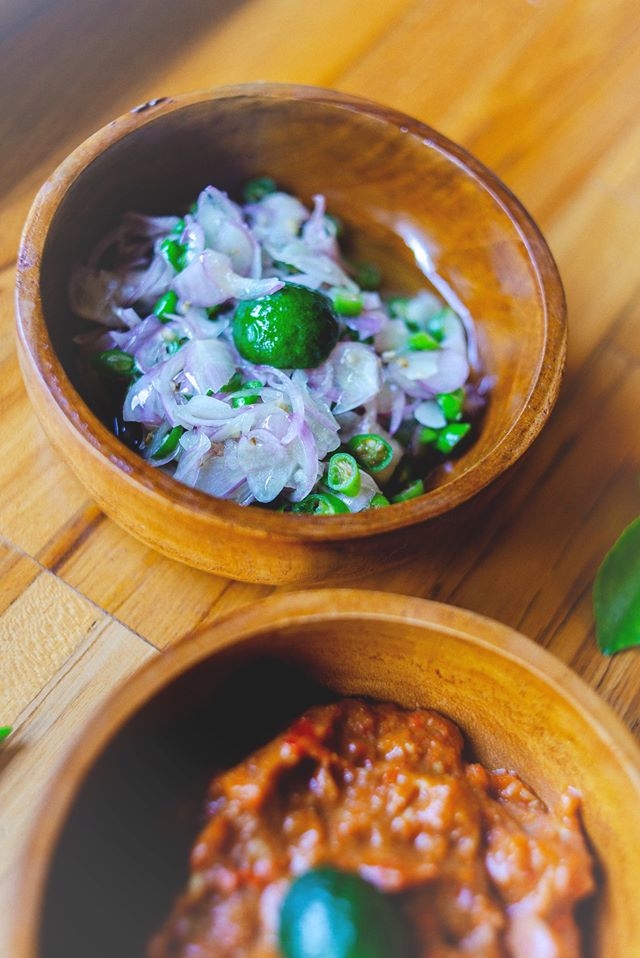
How do you like the recipes for the main sauce in traditional Indonesian cuisine – will you give them a try?
You can add one right now!